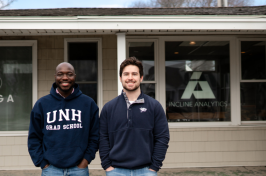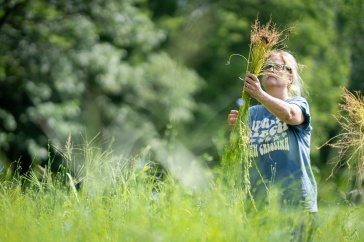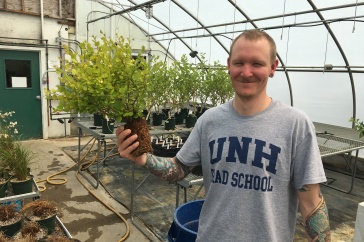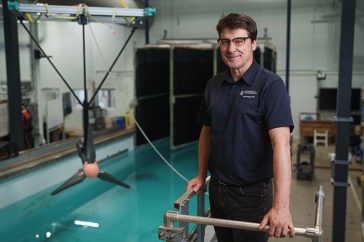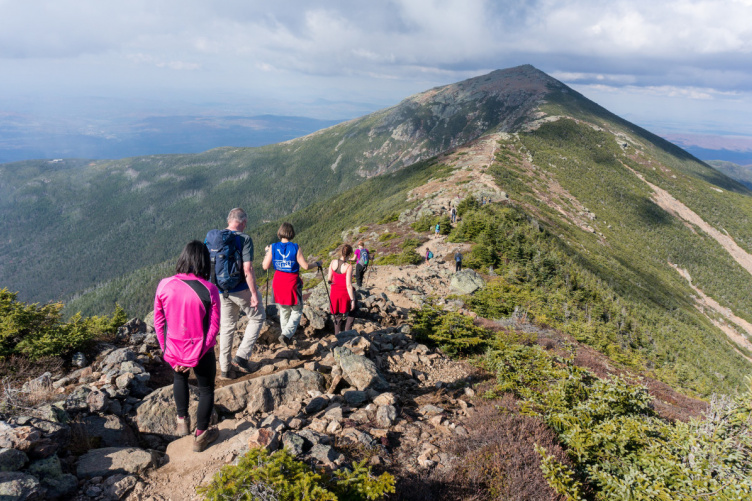
Stunning views along the popular Franconia Ridge draw visitors — and parking woes and crowding — to the White Mountain National Forest.
Doctoral student and outdoor enthusiast Myles Lynch is spending a lot of time in the White Mountain National Forest (WMNF) this summer. But instead of hiking or camping, Lynch, who’s pursuing a Ph.D. in education, is conducting important research on how others are using and enjoying the region’s iconic trails and waterfalls.

“We are monitoring and measuring overall recreation visitor use within the Franconia Ridge and Pemigewasset Wilderness areas of the WMNF,” says Michael Ferguson, assistant professor of recreation management and policy, who’s overseeing this project for UNH in collaboration with the University of Vermont and the USDA Forest Service. “Essentially, we are determining the number of recreationists that use these areas as well as their associated parking lot use.
“Myles is deploying and downloading data from an infrared trail counter which uses a high-quality infrared scope to count visitors as they walk by,” Ferguson adds.
Their data will help WMNF managers address problems more commonly associated with cities than the great outdoors: Parking, crowding, and conflict. Resource managers are seeking solutions to safety and experience concerns as cars continue to spill out of parking lots at popular trailheads and as visitors become increasingly crowded. The study area boasts spectacular ridgeline views and easy interstate access to major population centers, drawing millions of visitors who also pose a threat to both the natural and social environments.
Their data will help WMNF managers address problems more commonly associated with cities than the great outdoors: Parking, crowding, and conflict.
“Our objectives are to generate baseline data through a combination of electronic trail counts, direct visitor observations and visitor surveys. Ultimately, we want to provide empirical evidence that can be used to inform future management actions,” Ferguson says.
Principal and co-principal investigators of this study are Robert Manning at the University of Vermont and Nathan Reigner at Recreation and Tourism Science, LLC. The study is funded by the USDA Forest Service.







